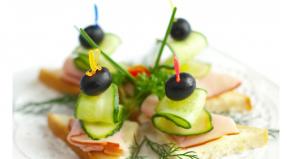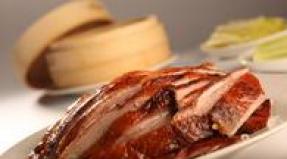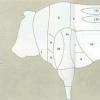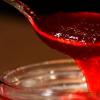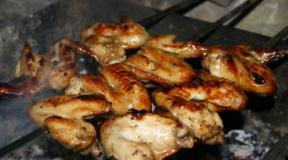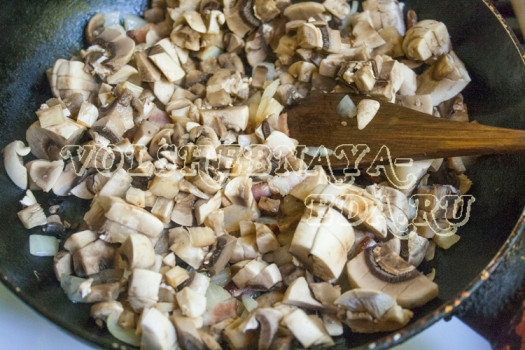How and what they drank in the Soviet Union. How to drink in the USSR
In the USSR, people ate a little differently than they do now. In order to stock up on products it was necessary to run around in different shops, stand in lines, agree to postpone the scarce goods, and only after that could you come home and pamper your stomach with cherished purchases. I decided to talk about the topic of food in the USSR and the author of this post, who himself remembers how things were at that time.
Food in the USSR was more than food. After the hungry post-war years, the opportunity, not just to get food, but to please the family and guests with something tasty and original, turned home cooking into creativity. Yes, the range on store shelves was poor. But, in the USSR, it was difficult to explain to those living in a world of abundance - there was “the art of making a deficit” ...
I have repeatedly met the opinion of citizens of mature age, saying that before the USSR, the food was more natural and tastier. People complain: "Now the oil is odorless and taste, mustard without bitterness, all without cholesterol, without sugar, without salt ... For what !!!"
And even though earlier it was necessary to chase products, now they say absolutely everything is not right, all sorts of additives, and in general there is no natural substance - all chemistry. And if in the USSR we were not so fond of the party with the government, then they would provide us with the same chemistry, in the same volume as now ...
Let's try to figure out what's the matter?
This is abacus, nee Abacus. Used in sovtorgovle and catering instead of calculators and other bourgeois excesses, there were also cracking cash registers on the basis of the adding machine, with a pen in case of a nuclear war ...

Everyone who worked in trade, catering, food industry enterprises, endured so much
that was enough, not only for his family, but for all his acquaintances and relatives.
There was some kind of cooperation "you - me, I - you", even a movie about it was shot.
And in order to buy something in the store “just like that,” it was necessary to have time to “deliver” and stand in line.

In the catering was almost the same ...

Bagels for some reason were in short supply especially simple and with poppy seeds.
I must say that vanilla drying was not in short supply.

Every autumn, hordes of marauders ravaged our front-line village in a single impulse. From the student to the professor, everything that was urgently initiated by the district committees was strongly initiated by the district committees ...
But first of all, of course, the army and the students ... But the potato still rotted in the fields.

And this is the famous "culinary college" ..

There were special service shops where they bought goods. There were holiday sets at the enterprises, those who taxed them lived, that is, eaten better than others .... Sometimes smoked sausage, sometimes smoked sausage, and sometimes (I never got) red caviar were sometimes found in orders.

Feasts were very popular, including for reasons of eating, and of course, drinking.
And so the food was simple and rather monotonous. And here is a typical table of that time ... And on it:

Olivier salad with mayonnaise but not with meat as in the original but with boiled sausage,
which one we got, Hungarian peas from the order, and the greens are already modern ...

Herring under a Fur Coat...

And of course the blue bird - the queen of the Soviet feast - the chicken.

And for tea - homemade cake "Napoleon" with custard.

Until now, in the older generation, especially among hacienda owners
Home canned food is extremely popular ... But in the countryside it is not a whim.

And this spinning machine without it you will not close a lid ...

And pickles for vodka ... But everyone is different ...

And with the help of this device, they took out the lids of the can of boiling water.

In order to talk about the "twists" that the hostess did, you have to be a poet. And "fazenda"! Is it possible to compare the taste of those from the garden, tomatoes and cucumbers with those that we buy today?
Of course it is impossible, but the trouble was that there were few of these revolutionaries of tomatoes, and there were few cucumbers, at least among my acquaintances only one family had many of them, but they lived in the garden ... Including their children who had problems with time for games.

Instead of expensive chocolates, it was possible to buy Hematogen for 11 kopecks.

And next to Gum and Zum, ice cream was sold in almost the same crunchy cup as it is now ... But the expensive 15 is creamy, 19 is ice cream.

And it's creamy on 9 in a waffle cup. Gone nature ...

In the summer, kvass from a barrel was popular, followed by cans with it, less often with banks in bags. Three-liter banks are very appreciated.

The problem of packaging was generally very painful. . And not just the way wine and liquor.
She collected everything and gently handed over. There was even a joke about the derivative of drunkenness, on the handed dishes ...

Something decent and out of turn - I don’t remember ...
And pay attention to the specially made bag.

A pound in one hand ...

Vegetables and fruits were in abundance "according to the season", and bananas were rare even in Moscow.
In December, Abkhaz blue-green natural tangerines appeared ...
So why is it tasteless, you ask now, and not then? Like it was then that there were no pickles?
And because, firstly, caviar is in every store, as well as 40 varieties of sausage at least. Having put caviar and sausage on the table, you no longer prove your belonging to the "elite" ... You just have money, but not much, otherwise you would have ordered a hall or a table in a restaurant ...
Yes, and there is nothing special in ham or balyk - you go, buy, eat.
Pall, then on the background of cutlets for 7 kopecks and soup soup set - smoked sausage and salad "Olivier" is yes, it is a holiday, and now for breakfast "this caviar again."
Food has lost sacred meaning. Yes, and the stomach is no longer the one who has a naughty liver, or stones anywhere ... Girls are older, again - the same ...

The love of drinking in Russia is a constant. They drank in tsarist times, and in times of revolution, and in the Soviet Union. Drink to this day
Budget basis
It so happened that in almost all times in Russia there was a tolerant attitude towards excessive alcohol consumption. Drunkenness to some extent even encouraged. And I understand why ... So, by the 1850s, the tsarist government received almost half of tax revenues from the sale of vodka.
After the revolution of 1917, Lenin imposed restrictions on the sale of alcohol. However, the ban did not last long. Soon after the death of Ilyich, Stalin canceled everything. Due to the sale of alcohol, the budget began to receive funds for socialist industrialization.
Wine is a joy given to us
“The people should drink wine,” Stalin said, and immediately added: “Not to work without bread, not to dance without wine!”
Drinking was not a threat to society. Probably because he loved to drink. Most often, Stalin drank homemade wine “Kindzmarauli”, supplied by Georgian collective farmers. And he drank a lot, but did not get drunk and deftly used alcohol for his own purposes. Usually, appointing new people to positions of responsibility, he invited them to the country for lunch or dinner. He offered to drink for a new appointment. For those invited, it was a great honor. The guests grew hopy, became more and more talkative, and laid it out as if to the host, who said what was impartial about his policy.
Stoparik on chest
After the war, in the fifties, in all cities of the USSR, snack bars sold alcohol for bottling. Tellingly, such eateries opened near businesses. There you could always have a quick bite, and anyone could drink a glass of vodka. However, buying a stoparik, a person was obliged to buy also dumplings or chops.
After the war, in the fifties, in all cities of the USSR, snack bars sold alcohol on tap.
Perhaps it was because of this that in those days there were no drunks wallowing in the dirt on the street.
Like a little glass
After the death of Stalin, Khrushchev came to power in the country. Exposing the cult of personality, Khrushchev left intact the Stalinist tradition of wide Kremlin feasts. Under him, they acquired a truly epic scope. On especially solemn days in the Kremlin, they drank and ate from three to ten thousand people.
Khrushchev N.S. during the feast
Khrushchev himself preferred cognac and vodka to all other drinks (especially vodka, which he was specially sent from the Ukraine), and respected lard and pickles as a snack.
- Under Khrushchev, drinking became a custom. "Sam" also drank a lot, but did not get drunk. Strong was, - recalled Mikhail Smirtyukov, the former head of the Sovmin's affairs. “Once, Nikolai Bulganin told me that he and Nikita somehow drank a bottle of brandy,“ polished ”all this with vodka and went to the presidium for a rally - and at least that! Like a piece of glass!
Think for three
However, Nikita Sergeevich drank his drink, but did not forget about the state treasury. In 1958, Khrushchev forbade selling vodka for bottling in canteens and snack bars catering. After the ban prices for alcohol soared instantly. Soviet citizens, deprived of the usual glasses of vodka on the way home from work, were forced to buy a whole bottle from the store.
Sitting in the kitchen
For convenience and savings, Soviet citizens realized that if there is not enough money for drinking, you can fold. This event - the drinking of a collective bottle of vodka with unfamiliar citizens in the nearest square - was called “figure out for three” and became a kind of brand of Soviet drinkers.
Figured on three
For world peace
After the overthrow of Nikita Khrushchev, Leonid Ilyich Brezhnev was elected General Secretary. It is with his name that the beginning of the era of stagnation and feasts is associated. Under Brezhnev, the country washed down blackly. The economy of the USSR was fueled by the sale of oil in the foreign market and vodka in the domestic.
By the 1970s, alcohol sales accounted for a third of government revenue. Alcohol consumption in the period from 1955 to 1979 increased by more than two times, reaching 15.2 liters per person.
The Soviet alcohol industry was flourishing in those years, enriched by the recipes of Siberian and Posolskoy, as well as two types of vodka caps - screw and “visorless”.
The Secretary General has introduced luxuriant banquets. At the Epicurean receptions in the Kremlin, up to 2,500 people gathered to drink for world peace and “personally dear Leonid Ilyich”.
"Either sick, or podlyuka"
In 1975, after a heart attack and stroke, Brezhnev almost quit. But even then, the secretary general did not stop drinking the medicine with “Vibe” - they say, in order to be better absorbed. The 18-year period of his reign, economists later call the "era of stagnation", and the jokers - "the era of the feast."
“If the politician doesn’t drink, he is either ailing or a wimp,” said the late former first secretary of the Orenburg Regional Committee of the CPSU, twice Hero of Social Work, Ivan Kovalenko.
Advantages and disadvantages
Anyway, by the beginning of the 1980s alcoholism in the USSR became the social problem number one and took the third place among illnesses after cardiovascular diseases and cancer.
Hummy company
In May 1985, Gorbachev announced the start of a large-scale anti-alcohol campaign in the USSR. Gorbachev’s plan was quite decisive and effective. In the USSR, fertility rose, wives began to see husbands more often, and labor productivity increased.
However, like many Soviet initiatives, the anti-alcohol campaign had both pluses and minuses. After the spike in alcohol prices and the decline in its production, many people began to drive moonshine, and someone poisoned themselves with poisonous liquids, such as antifreeze.
The discontent of the population by the Gorbachev anti-alcohol campaign summed up the old Soviet joke:
It is a long line for vodka. One man could not stand it and said: “Everything, I will go to the Kremlin, I will kill Gorbachev!” An hour passes, he returns. The queue starts asking him: “Well, did he kill him?” “So how,” he answers. “There is a queue of people who want to be even longer than here!”
Drink less
After the collapse of the Soviet Union in 1992, the state monopoly on alcohol was abolished, which led to an enormous increase in the supply of alcoholic beverages on the market. In 1993, alcohol consumption reached 14.5 liters of pure alcohol per person, and Russia became one of the largest consumers of alcohol in the world.
Well now, you ask, how now? Now they drink less. However, the reduction in alcohol consumption should not be associated with the growth of self-consciousness of Russian citizens. According to experts, the reduction in the use of spirits in modern Russia is primarily due to an increase in the fleet. To work and from work - behind the wheel, and it is obligatory. Yes, and I want to live. Most understand that to get behind the wheel as a drunk is to get a pass to the next world.
From myself I want to add this chart. It perfectly shows the dynamics of alcohol consumption with various leaders of the USSR and Russia.
The use of the text is possible only with the reference to the source (Site " ") or referring to LJ .
"Speaking of Hawthorn. Boast friends, what was the most terrible thing you used?" - asked me in the tape Misha. To be honest, this news of the week about poisoning by Hawthorn did not immediately understand, foolishly at first thought that it was about some poisoned berries. After all . And I myself have never tried a particular exotic - except maybe that time when I bought sake! Whether Misha case ...
This is Misha in the midst of stormy youth
Misha is a seasoned man, served in the Soviet Union in the army, and generally he knows a lot about what he did not know by hearsay. He told in his office about how they drank before (and can still do). With his permission, I cite his text, for it seemed interesting to me (cautiously, profanity).
* * *
What I drank in childhood, I do not set off. They drank nasty "Solntsedary", drank brew from everything and very different degrees of purification. From the magical moonshine alcohol-free fortress (made not for sale, "for yourself") to the vile, "gray" (gray, whitish) pervach, purchased from moonshiners. Which is the name of the "booze". They drank the nasty "Andropovka", released for the people in 1985.
With the advent of Gorbachev and his unsuccessful “fight against drunkenness,” the range of liquids has expanded. Due to lotions, rubbing and other inedible garbage. I did not drink this, there was no need. But the people "on raion" poisoned regularly. In short, we drank ..
Shortly before the call to the service, I stopped drinking. I'm tired. Apparently, never wanted. Outgrown teenage bravado.
In the army I drank only four times.
For the first time - the postman brought a half-cup of smuggled warm vodka in a rubber hot-water bottle. One hundred grams went fine, was drunk in the snipe with unaccustomed. The smell of rubber chased me for a week.
The second time, more out of curiosity than by much desire, I drank a diluted cologne "Carnation". Odeklon was diluted approximately 1: 1 with water; a white liquid was obtained with an approximate 40% alcohol content, oily to the taste. And the smell! And burp! After consuming this “liquor”, I recalled with good nostalgia the vodka from a rubber heater.
After that, a couple of times drank the mash, which the craftsmen were mutilated in fire extinguishers, thoroughly washed and covered with food varnish.
I saw how the military builders "drink" shoe polish .. Trying this desire did not arise.
The upper crust was cut off from the soldier's loaf of brick bread. Approximately half of the crumbs raked. In the resulting bread box lay shoe shoe polish, which came to us in a five-liter tins, as in the photo ..
This hellish sandwich stood for a while, then gently cut off the top, with shoe polish. The remaining half of the brick, soaked in alcohol, consumed inside. Nobody died. Smelled just disgusting. Steps for five carried shoe polish.
The most exciting story happened to the warriors of our construction cupola in the summer of the 88th. Three heroes got a demobilized "chord" (this is when they give you a job, as you finish, so you go home).
It was necessary to cover with roofing material several warehouse roofs in the aviation regiment. Naturally, they also made contact with the same as they were stupid assists from aviation servants. And they drove them to Bukhalovo. What exactly, we were never told - the secret garbage was.
In short, the three wise men leaven this baida, sitting on the roof. When one lost consciousness, two more powerful ones decided to roll it with rags and roofing felt, so that they would sleep off. Soon the second fell. The third gathered his strength and descended from the roof. He picked up the flyers. They climbed onto the roof, raked in the second, took them to the hospital. Both partially shook their eyesight, but survived. First, clear dick, there on the roof and died ...
That's it .. And you - Tincture on nipples ...
Golden Autumn, 1 rub.15 cop. - "Zosya"
Vasisubani, 2 rub.00 cop. - “With Vasya to the bathhouse”
Port 777, 3 rub.40 kopecks - "Three ax", "Lesopoval"
Bile Mitsne, 1 rub.70 kopecks - "Biomitsin"
Import substitution, it turns out, was relevant in the days of the Soviet Union.
Vermouth, 1 rub. 50 kopecks - “Vera Mikhailovna”, “Vermut”
The aroma of gardens, 1 rub. 80 kopecks - “Aroma backs”
Autumn Garden, 1 rub. 70 kopecks - “Fruit-profitable”
Port 33, 2 rub. 15 kopecks - “33 misfortunes”
Rkatsiteli, 2 rub. 50 kopecks - "Cancer to the goal"
Caucasus, 2 rub.50 cop. - “A beggar in the mountains”
Anapa, 2 rub.30 cop. - “Sunstroke”
Fruit wine, 1 rub.30 cop. - “Tears of Michurin”
The most legendary "babbling" of the USSR
Port “AGDAM”, alcohol 19% by volume, price 2 rub. 60 kop., - as soon as they did not call - “How I will give”, “Agdam Bukharyan”, “Agdam Zaduryan”, etc., etc.
This hellish mixture of fermented grape juice, sugar and potato alcohol in the country of victorious socialism was drunk by everyone - workers, students, academics.
Agdamych finished his victorious march across the expanses of the country only in the 90s after the destruction of the cognac factory in the town of Agdam, the most famous city of Azerbaijan, which is now completely wiped off the face of the Karabakh conflict.
At the request of workers in the alcohol field:
Dessert drink “Volzhskie Zori”, strength of 12% vol., Sugar-24%, price - 1 rub.15 kop. - A glorious representative of the Soviet "Shmurdyakov."
As a rule, this “dessert” was tried only once, because for the second time, the gagging impulses began already at the mere mention.
“Tincture from natural herbs, possessing toned properties” is such a long name on the label of another legendary drink of the 70s - Balsam “Abu Simbel”.
Capacity 0.83 liters., Fortress 30 degrees, price- 5 rubles. 80 kopecks
As we were enlightened - students of elementary courses, experienced undergraduates: “Abu” is the best “baboukladchik”.
The cork, they taught, must be opened very carefully, so as not to damage, and the bottle should not be thrown away in any case: after emptying, it is necessary to pour ordinary port wine into it, carefully plug it and - everything is ready for the next romantic date!
Well, finally, one of the main "gifts" N.S. Khrushchev to the Soviet people - the wine of Algeria, which, with the light hand of domestic "winemakers" turned into "Solntsedar", "Algeria" and "Pink Vermouth".
The people who survived, having tried this filth, dubbed it “ink”, “paint for fences”, “insecticide”, etc., etc., but nevertheless almost 5 million decalitres of this oil came to the Union by tankers, which with difficulty otparivali after draining in the village of Solntsedar near Gelendzhik.
It was all about the price: “Algerian” - 14% and 65 kopecks !!!, “Solntsedar” - 20% and 1 rub.25 kopecks!
His deadly harvest in the open spaces of the USSR "Solntsedar", which became a symbol of the era of stagnation, collected until 1985, until Gorbachev, who entered the history of wine consumption of the country, as the Mineral Secretary, began his struggle with alcoholism and drunkenness.
Moscow Special Vodka
0.5 l, 40%, price 60 rub.10 kopecks,
Cookware 50 kopecks. Cork 5 kopecks. 1944 - "Twig"
"Vodka" 0.5 liters, 40%, the price of 3 rubles. 62 kopecks
1970 - Crankshaft
"Vodka" 0.5 l, 40%, price 4 rub.70 kopeks.
1982 - Andropovka,
she, - "First Grader" (released in early September),
she, - "Yurkina Sunrises" (according to the film)
“Russian vodka” 0.33l, 40%,
i do not remember the price, in a bottle from under "Pepsi" - "Raisk"
(in honor of the wife of the Mineral Secretary of the CPSU, Gorbachev)
“Russian vodka” 0.1 l, 40% - “Homeless yoghurt”
Vodka “Strong” (“Krepkaya- Strong”), 0.5 l, 56% strength.
This very rare vodka from the period of the USSR, with a strength of 56%, is deprived of national attention, since sold mainly to foreigners.
The legend about her appearance is connected with the name of Stalin: they say, the leader, who had a weakness for polar explorers, asked them at one of the receptions that they drink during wintering, to which they replied: alcohol, diluted to the fortress parallel, in which they 90%, Salekharde, 72%, etc., are at the moment of use, and already at the next Kremlin reception on the occasion of the award, Stalin treated the conquerors of the North with specially prepared vodka of 56% fortress, which corresponded to the geographical latitude of Moscow.
Pertsovka-not only from cold!
"And we went with her together, like a cloud,
And we came with her to "Beijing" hand in hand,
She drank "Durso", and I "Pepper"
For the Soviet family, exemplary! "
After these lines, Alexander Galich simply does not want to tritely comment on this one of the most popular tinctures of the USSR, therefore, only the facts from the labels:
Bitter tincture "Pertsovka", 0.5 l, 1991,
35%, the price with the cost of dishes 8 rub.00 cop.
"Ukrainian mountain of pepper", 0.7 l, 1961,
40%, the price with the cost of dishes 4 rubles. 40 kopecks
It was still in the USSR. Pertsovaya tincture, 30%, has been produced already since 1932, but for more than 30 years of collecting, I never got one of its bottles, because it was not just an infusion of different varieties of allspice and the first cold remedy, but also a real holiday for all drinking citizens of the country of the Soviets.
Today it is customary to talk about the "alcoholization of the population in the dashing 90s" But, as statistics show, it was the USSR of the 1970s - 80s that was the country of "everyday alcoholics". The fact is that it was during these years that alcohol consumption statistics reached its maximum. So, how much and why they drank in the era of stagnation, and what changed in the years of perestroika.
Alcoholization of the population under “dear Leonid Ilyich”

Brezhnev era of the USSR - a country of drinking people. To verify this, it is enough to turn to statistics. So, in the 1960s, an ordinary Soviet citizen a year drank an average of 4.6 liters of alcohol, and by the "stagnant" 1970s, this figure had grown almost 2 times to 8.45 liters, and by the early 1980s - This figure reached 10.6 liters.

It turns out that per year in the early 1980s, the average person drank 53 bottles of vodka or 118 bottles of wine. And this is the “average temperature in the hospital,” because there were people who completely drunk or drink very rarely. And if you add the consumption of moonshine, homemade liqueurs and non-target liquids like cologne or steklomoy to this official figure, then the real picture looks shocking - the official figure can be multiplied 1.5 - 2 times.

According to the statistics of the same Brezhnev era, 2% of dead men are victims of alcohol poisoning. And not the effects of long-term alcohol use, such as heart attacks, cirrhosis or pancreatitis, namely poisoning. 23.7% occurred while intoxicated and about the same number of suicides for the same reason.

In general, annually, due to various reasons related to alcohol, 486 thousand people died in the USSR, which is quite comparable with the population of the regional city.

Today, many political scientists see the reason for the drunkenness of the Soviet people in the state system of that time. An ordinary Soviet citizen sometimes drank simply out of boredom. Yes, and what remained for the working people to do was to start their own business, you will not go abroad (unless you go to the Crimea once a year), you won’t earn more than 200 rubles. But you can go every weekend to the country and drink there with friends.

Moreover, tolerance towards alcoholics was extremely high in the society of that time. Although anti-alcohol posters were hung out on the streets and enterprises, they ridiculed the drunks in the films, the sobering centers worked, but in real life they worked with drunks at home and tried not to dismiss at work without special reasons. And if the dissidents were actively shut up in prisons and madhouses, then the alcoholics were treated as their own, native proletarians, who simply stumbled.
Gorbachev anti-alcohol company

When Gorbachev came to power, perestroika began and publicity was announced, they began to talk about many problems of the Soviet system, including domestic drinking. On May 7, 1985, the Central Committee of the CPSU Central Committee issued a decree “On Measures to Overcome Drunkenness and Alcoholism”, from which the so-called “anti-alcohol company” began. Within the framework of the latter, the state introduced unprecedented measures - vodka prices increased more than 2 times, which almost 2 times reduced its consumption.

It should be said that this measure was discussed for a long time in government circles, because the income from the sale of alcohol constituted a substantial part of the budget. But even here excesses began - an order was given to cut down vineyards throughout the Union. In the collective wine and state farms as they could, elite varieties were saved.
It was a dry law that led the people to start drinking everything. The hypnotic drugs, tranquilizers, the existence of which the majority of drinkers didn’t even suspect, went into action. At the same time, interest in drugs was first recorded, which subsequently gave a terrible death rate from overdose. The people on the motive of the then smash hit about Komarovo sang: “For a week, until the second, we will bury Gorbachev. We dig up Brezhnev, we will continue to drink. ”

On the other hand, in parallel with these measures, Soviet citizens were allowed to travel abroad without a hitch, it became possible to open their own business, which gave optimism to active people who during times of stagnation were forced to drink from hopelessness and meaninglessness in research institutes and factories.
One way or another, but at the end of the Soviet Union alcohol consumption per capita was 3.9 liters (whereas under Brezhnev, 10.6 liters).
“Isn’t it enough for us? Anyway, look very realistic.

